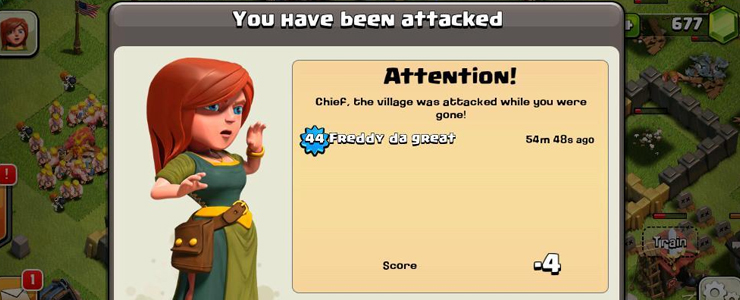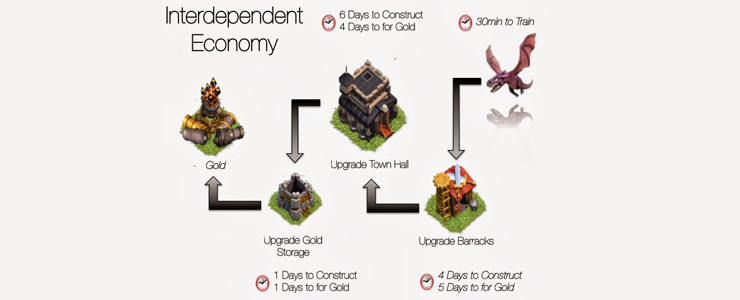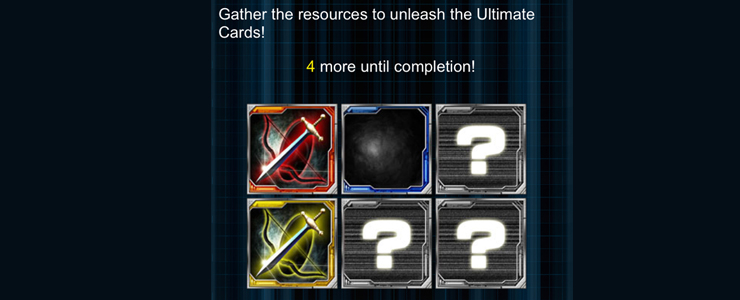· 9 min read
Mid-Core Success Part 2: Retention
Michail Katkoff
Product Manager at Supercell
Editor’s note: This is the second instalment of a 4-part series written by Michail Katkoff, Product Manager at Supercell. In this series, he explores what it takes to create a successful “mid-core” mobile game. Make sure to check out the other instalments in the series:
- Part 1: Defining Core Gaming Loops
- Part 3: Embracing Social Gaming
- Part 4: Maximizing In-Game Monetization
Why Retention?
Retention is the foundation for a successful F2P game. Players who keep coming back to the game several times a day, day after day and month after month enable the game as a service model. But creating that drive for players to keep returning is without a doubt the toughest challenge for a game team. In this post I’ll break down how to overcome this challenge with a well thought out core loop, balanced game economy and clever use of events.
Note: Social mechanics are essential when building retention and progress, yet I’ll leave them mostly out of this post and instead concentrate on them in the following post.
The Main Goal
In my mind, there’s no better way to retain players than to have them set up goals for themselves. Self-motivated players will be logging in numerous times per day just to achieve that goal. But to create a user base of self-driven players, the game team has to first make players want to become better by rewarding them for progress and punishing for falling behind.
With the desire to improve comes the desire to progress. And the desire to progress is extremely powerful, as players will self-create sub-goals for themselves and work to optimize their gameplay. My opinion is that the desire to become better should always be the main goal for every player. Because in a well-designed F2P game, improving is synonym to progressing and progressing should equal the amount of time spent playing the game.
Personally, I like to divide progression incentives into positive and negative, where positive incentives promise players that they’ll be stronger, tougher and better once the goal is achieved. Negative incentives on the other hand threaten players that they’ll fall behind if they stop progressing towards the main goal.
Positive Incentive to Progress
In-game shops are one of the best ways to encourage progression. Price and unlock requirements needed to gain access for specific units create a very clear target for players. Also, the position of a specific unit in the in-game shop is important, as it communicates value – the last ones to unlock are the strongest and the most desired.

better results in battle creating that positive incentive to progress.
Negative Incentive to Progress
Players’ progression slows down exponentially with time. Timers will increase and prices will rise, making it harder and harder to progress. At some point the next unit or a building just might seem a bit too far away. This is when negative incentives should kick in, showing players that slowing down just isn’t an option.

and that they need to progress to defend themselves. Negative incentive at its best.
Most importantly, when designing progress incentives, one should always keep in mind that the social element is an important driver for progress. Progress is hard to objectively measure, which is why game design should encourage players to compare their progress with other players, be it through collaboration or competition. I’ll cover social elements in the third part of mid-core post series.
Sub-goals
Sub-goals are all the steps players acknowledge they need to take in order to reach their main goal. Personally, I like setting up sub-goals with inter-dependable game economy. Clash of Clans, among other strategy games, is a great example of this kind of economy structure as it presents a clear goal for the player hiding the long path it actually takes to get to that goal. This way, the road to that ultimate goal might seem short and very achievable to players. Only once they are mid-way through the grind will they start realizing how long it actually takes to reach the target, but at that point they’ve already invested too much to stop.

There are two schools when it comes to sub-goals: Some designers like to communicate sub-goals to players and almost force them to follow a set path of progress. Another way to handle sub-goals is to give players the freedom to progress as they will, even though this often leads to not so optimal progress. Also, free progress makes tracking of an average player’s progress more complicated, which leads to challenges in content updates.
Events
Regular in-game events are a powerful tool for driving short-term engagement and long-term retention. Because of their timed nature, events encourage players to heavily engage with a game for a relatively short period of time.
Typically, events last from a few hours to several days, but sometimes events might last for weeks. Usually events are designed for players who have already been playing the game for a while. Overall, events are an excellent way to spice up the gameplay for these retained players, resulting in increased long-term retention.
There are few key elements all successful events tend to have. The first one is naturally the limited time the event is active. Second is the event-specific inconsumable reward, which players receive if they are able to complete the event in a given time. Uniqueness of the reward is important for engagement, while the inconsumable nature of the reward turns it into a status symbol. Also, giving the reward for completing an event after the actual event has ended is a way to boost retention. Some players do get tired of the game during an ongoing event, as it requires so much playtime. But, giving that usable reward after the event has ended will keep players playing the game, as it will have something new for them. Finally, it is important that events follow a game’s core loop instead of adding new elements to it.
Example: Marvel War of Heroes
From time to time the player receives a Treasure (collectible item) when grinding through the PvE quests. Each collectible item is a part of a six piece collection. Once a player possesses all six items in the collection she’ll receive a unique card and the collection will be completed. Completed collections transfers into collection rewards while also closing the collections from looting.

Of course, having one rare card is never enough in Mobage’s card games, as you need at least two of the same to fuse into one super-powerful card. So the player is encouraged to finish the collection three times: first collection reward is the card XY, second reward is Bonus and third reward is again the card XY).
What makes grinding collections interesting in Mobage’s card games is the fact that you can steal specific Treasures from other players – and other players will try to steal the Treasures you posses. Stealing ends only when a collection has been completed.
The way looting monetizes is amazing:
- A player has to be fast when he sets to complete a collection, as somebody is always looking for the Treasures he has at the moment. Being fast means usually buying PvP energy as there’s no time to wait for energy to reload.
- To loot a Treasure a player needs to have a strong attack deck. Buying an additional card pack seems like a good investment when you get beaten one too many times.
- To successfully defend the collection while looking for missing pieces, a player needs to have a strong defensive deck. Buying a card pack sounds like a great idea when your defenses have been defeated over and over again.
- Players can also put a timed defensive shield over the collection items they just looted. When a player tries to loot an item protected by a shield, they automatically lose. There’s a custom animation to this kind of battle and it sucks to be on the receiving end. It actually sucks so much that you want to put shields on all of your Treasures just to make all those players who try to steal from you regret it.
Make Every Session Count
Retention is simply a game’s most important metric. Successful mid-core titles hold on to players for months, having them play over half a dozen daily sessions and spending well over an hour interacting with the app daily.
To reach these retention numbers, developers need to make sure players want to progress, then create paths to these goals with an interdependable game economy. I wouldn’t spend too much time on the so-called ‘retention features’, like daily bonus and push notifications, as they bring nothing more than cosmetic improvements. Instead, I’d concentrate on game economy and balancing. Make players want to be better and set up goals on the horizon. Then, either guide players to these goals via mission structure, or let them create their own sub-goals. Just make sure that every session takes them at least a bit closer to that goal they’ve set up.
Editor’s note: make sure to check out the next article in this series: Embracing Social Gaming